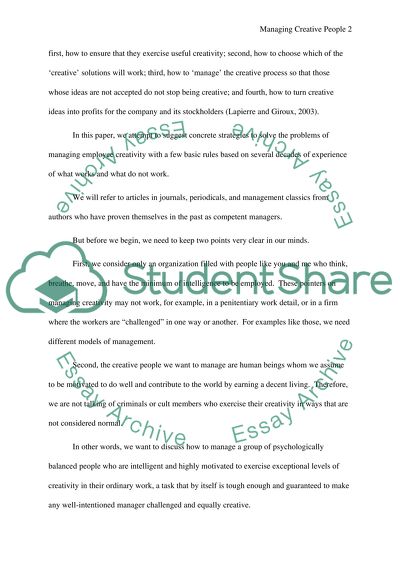Cite this document
(“Managing Creative People Essay Example | Topics and Well Written Essays - 2000 words”, n.d.)
Retrieved from https://studentshare.org/miscellaneous/1526449-managing-creative-people
Retrieved from https://studentshare.org/miscellaneous/1526449-managing-creative-people
(Managing Creative People Essay Example | Topics and Well Written Essays - 2000 Words)
https://studentshare.org/miscellaneous/1526449-managing-creative-people.
https://studentshare.org/miscellaneous/1526449-managing-creative-people.
“Managing Creative People Essay Example | Topics and Well Written Essays - 2000 Words”, n.d. https://studentshare.org/miscellaneous/1526449-managing-creative-people.


